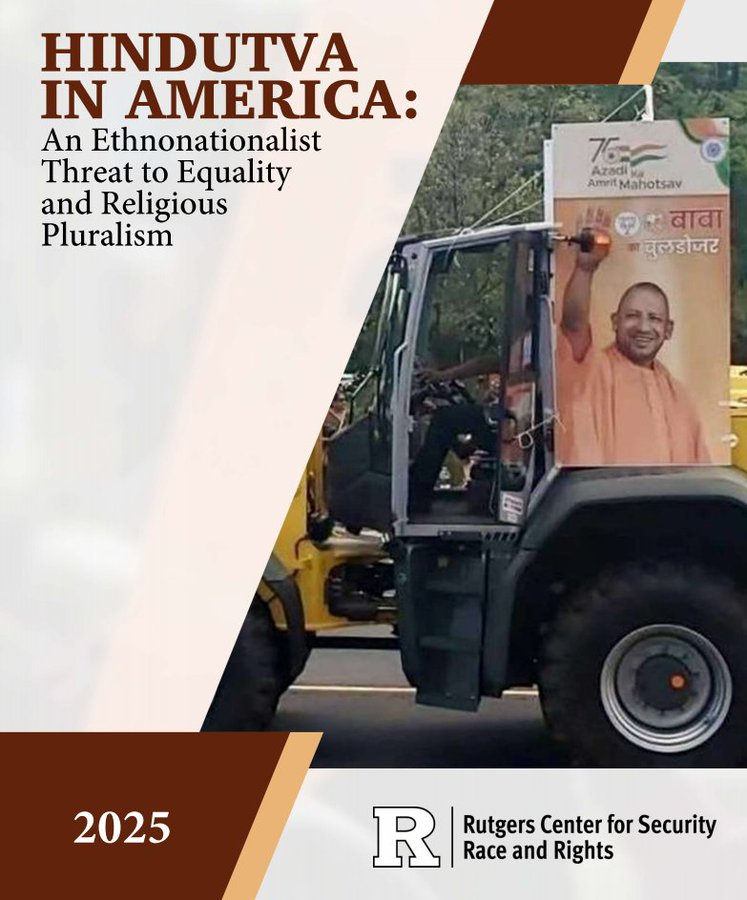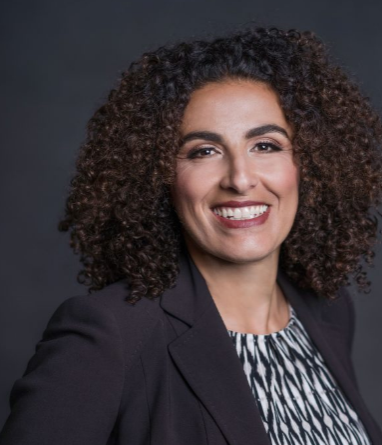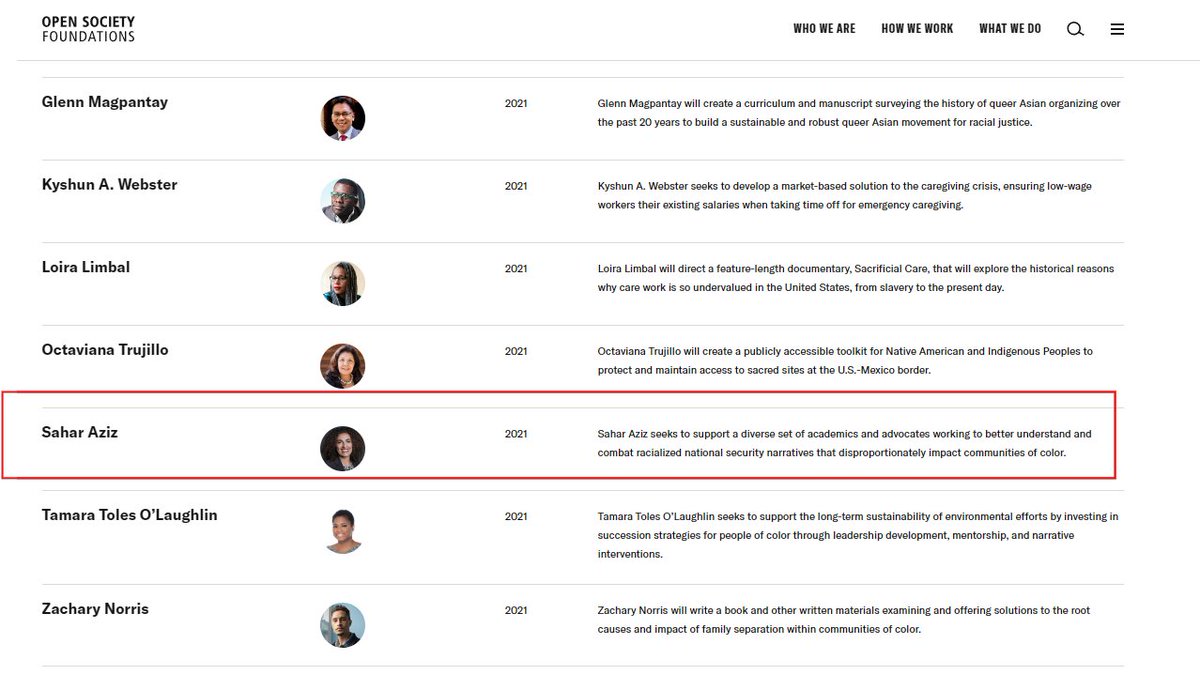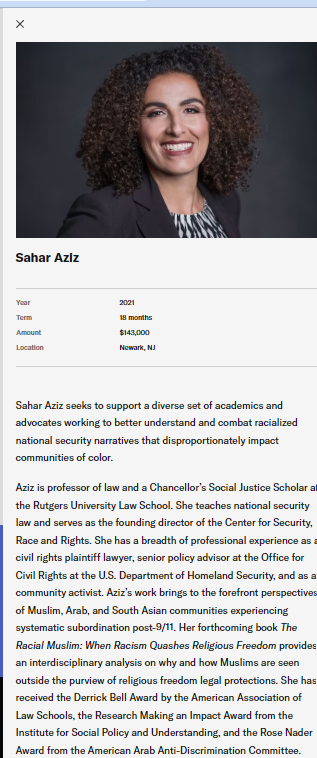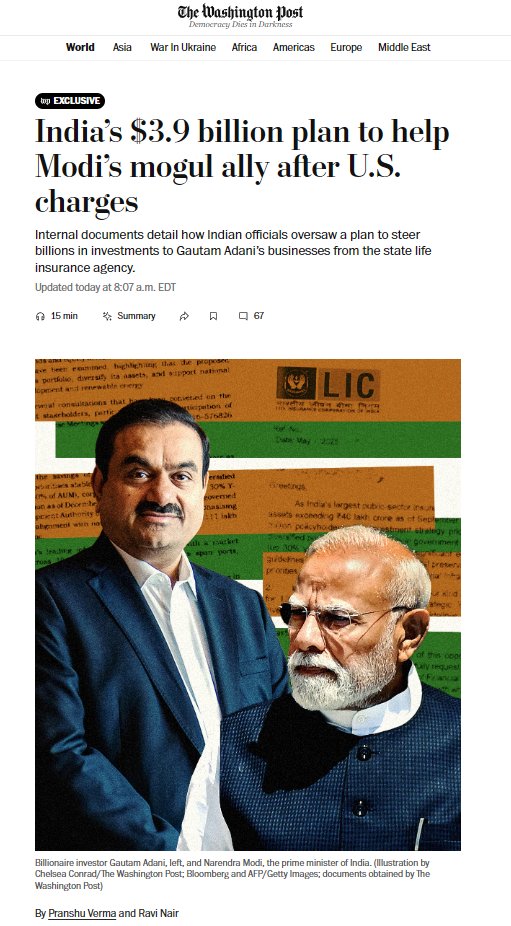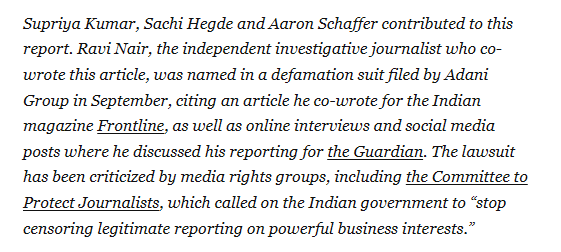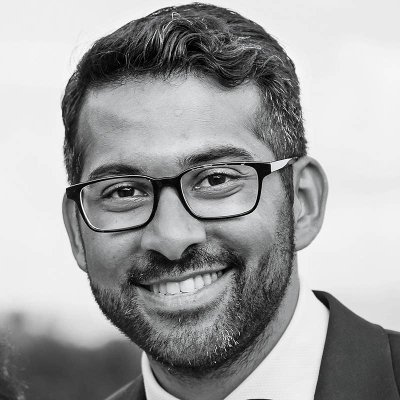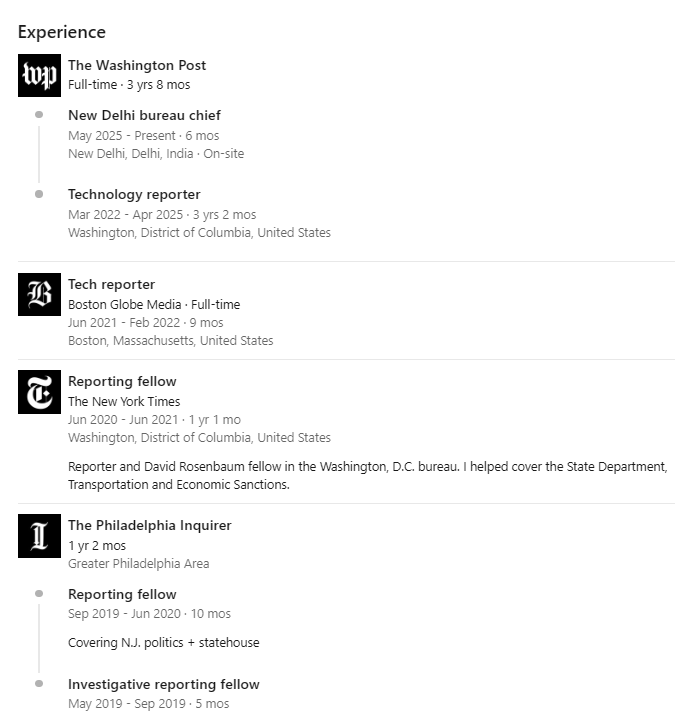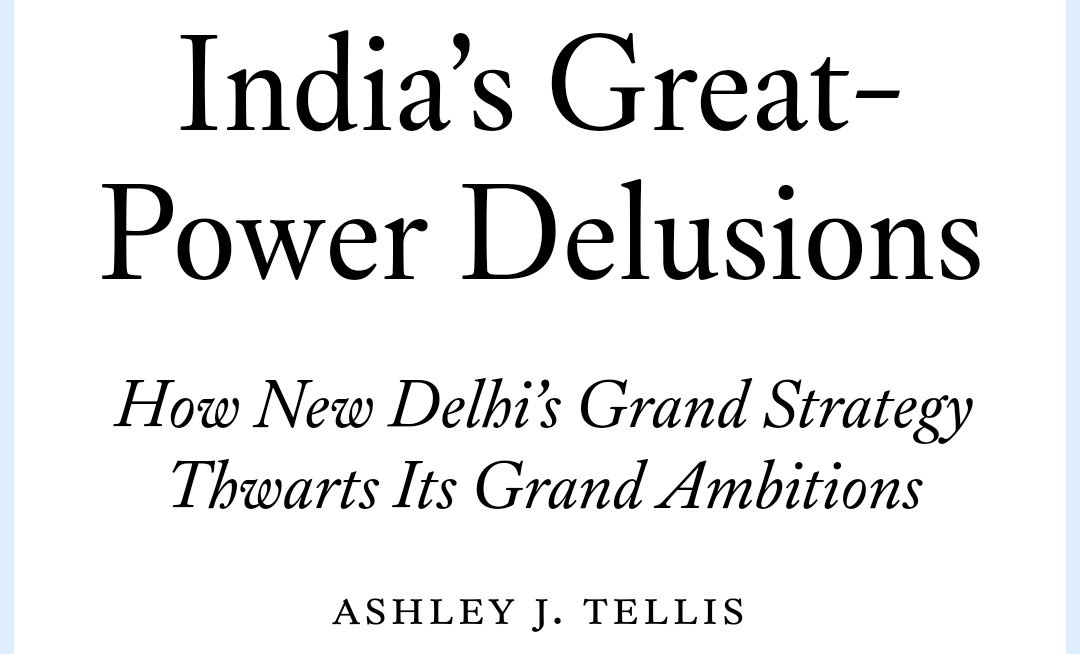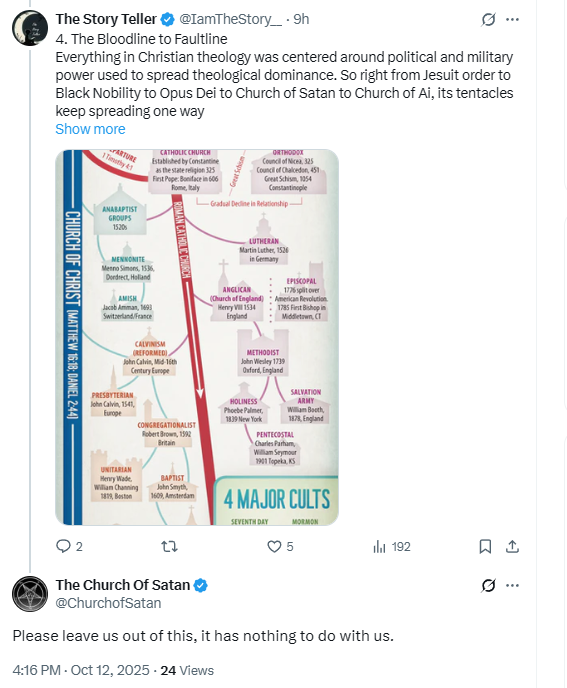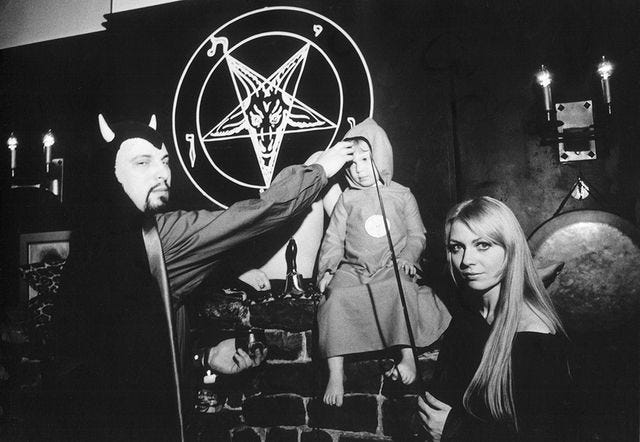Temples of Akhand Bharat Destroyed by the Muslim Invaders
Series based on Muslim Historians' work - Part 1
🧵
🪔To date we have been squabbling with seculars and anti-Hindu leftists for the historical accounts and evidence about the temples destroyed in the Akhand Bharat and proofs to prove that hundreds of the Mosques were built on them, using the material of the same destroyed temples.
🪔In this series, we will see how then Muslim historians noted and glorified the gory details of the Muslim invaders destroying Hindu Temples. I will educate the Hindu society and quell the doubts of the seculars about the cultural heritage of the Akhand Bharat and its temples.
🪔How later on liberal leftist academics and historians twisted and appropriated history to glorify those Muslim invaders and looters as great patrons of art and architecture.
Series based on Muslim Historians' work - Part 1
🧵
🪔To date we have been squabbling with seculars and anti-Hindu leftists for the historical accounts and evidence about the temples destroyed in the Akhand Bharat and proofs to prove that hundreds of the Mosques were built on them, using the material of the same destroyed temples.
🪔In this series, we will see how then Muslim historians noted and glorified the gory details of the Muslim invaders destroying Hindu Temples. I will educate the Hindu society and quell the doubts of the seculars about the cultural heritage of the Akhand Bharat and its temples.
🪔How later on liberal leftist academics and historians twisted and appropriated history to glorify those Muslim invaders and looters as great patrons of art and architecture.

1. Futuhul Baldan by Ahmad bin Yahya bin Jabir
The author of the Futuhal Baldan, Ahmad bin Yahya bin Jabir, is known as al-Biladhuri. He lived at the court of Khalifa Al Mutawakkal (AD 847-861) and died in AD 893. His history is one of the earliest and major Arab chronicles. It gives an account of Arab conquests in Syria, Mesopotamia, Egypt, Iran, Armenia, Transoxiana, Africa, Spain and Sindh. The account is brought down to Khalifa Mutasim's reign in AD 842.
In his muslim history compedium, Ahmad bin Yahya bin Jabir, is known as al-Biladhuri mentiones details of the below temple desecrations by the Muslim invaders:
1. Ibn Samurah (AD 653)
His full name was Abd ar-Rahman bin Samurah bin Habib bin Abd ash-Shams. He was appointed
governor of Seistan after the first Arab invasion of that province in AD 650 was defeated and dispersed. Ibn
Samûrah reached the capital of Seistan in AD 653.
On reaching Dawar, he surrounded the enemy in the mountain of Zur, where there was a famous Hindu
temple. Their idol of Zur was of gold, and its eyes were two rubies. The zealous Musalmans cut off its hands and plucked out its eyes, and then remarked to the Marzaban how powerless was his idol to do either good or evil.
An explanation about the Hindu Temple of the Zun
(The kingdom of Kapisha or Kabul (also known as Kabulistan) lay on the north-west of Sindh and consisted of the valley of the Kabul (Kubha) river spreading over the mountains all the way upto the Hindu Kush (Upari Syena) mountains. Hieun Tsang, the well-known Chinese traveller, mentions that the kingdom of Kabul extended over ten dependent states which included Lampaka (Laghman), Nagara (Jalalabad) and Gandhara. Immediately to the south of Kabul was the kingdom of Jabala or Zabul (also known as Zabulistan), comprising the valley of the Helmand river and the surrounding territories on the east and west of the river, extending upto present-day Balochistan (Gedrosia) on the south. In the 7th Century A.D., these two kingdoms formed parts of India both politically and culturally, being Indian in language, literature and religion and ruled over by kings who bore Indian names.” The kingdom of Kabul was ruled by a Kshatriya Hindu king of the ancient Shahi (Turki-Shahi) dynasty founded by Barhatigin. Barhatigin was said to be of Tibetan origin and the Shahi dynasty established by him ruled for about sixty generations, with one of his descendants being Kanik (probably Kanishka), the same who is said to have built the ‘Vihara’ of Purushavar. The king of Zabul was also Hindu and bore the title of Shahi or Shahia. He was related to the Kabul Shahis and was known to the Arabs as “that king of Al Hind who bore the title of Zunbil. Zunbils were also known as Rutbil, Rantbil, Ranbal or Ramal and were renowned for their bravery. In terms of religion and culture, the entire regions of the Kabul river valley and the regions from Ghazna to Kandahar were mainly Buddhist and Hindu. Zunbils got their epithet from the Shaivite god Zun, also known as Zur. The temple of Zun was situated on top of a sacred mountain in Zamindawar of the upper Helmand. Zamindawar or ‘Land Of The Justice Giver’ was a mountainous region located to the north of Kandahar and the temple of Zun was the most revered and important pilgrimage centre of the entire region. The temple had a golden idol of Zun with rubies set as eyes. Zun is said to have been“the northern mountain form of Shiva or ‘an adaptation of Shiva to a local god, introduced from India. It is also said that the worship of Zun might be related to that of the old shrine of the sun-god Aditya at Multan.
- Al Hind: The Making of The Indo Islamic World, Vol. 1 - Early Medieval India and The Expansion of Islam -
7th-11th Centuries, P 112–114 by Andre Wink
- Kitab Ul Hind: Vol. 2, P 11 - Al Beruni Translated by Edward Sachau)
2. Qutaibah bin Muslim al-Bahili (AD 705-715)
He was a general of Al-Hajjaj bin Yusuf Saqafi, the notorious Governor of Iraq under Caliph Al-Walid I
(AD 705-715).
He was made Governor of Khurasan in AD 705 and is renowned in the history of Islam as the conqueror of Central Asia right upto Kashghar, Samarqand (Farghana) the birth place of the Moghul Invader Babur.
Historical accounts say that Kutaibah granted peace for 700,000 dirhams and entertainment for the
Moslems for three days. The terms of surrender included also the houses of the idols and the fire.
temples. The idols were thrown out, plundered of their ornaments and burned, although the Persians used to say that among them was an idol with which whoever trifled would perish. But when Kutaibah set fire to it with his own hand, many of them accepted Islam.
3. Muhammad bin Qasim (AD 712-715)
He was the nephew as well as son-in-law of Al-Hajjaj, who sent him to Sindh after more than a dozen
invasions of that province had been defeated by the Hindus.
The town of Debal (Sindh) was thus taken by assault, and the carnage endured for three days. The governor of the town, appointed by the Hindu King Dahir, fled and the priests of the temple were massacred. Muhammad marked a place for the Musalmans to dwell in, built a mosque, and left four thousand Musalmans to garrison the place. Ambissa son of Ishak Az Zabbi, the governor of Sindh, in the Khilafat of Mutasim billah knocked down the upper part of the minaret of the temple and converted it into a prison. At the same time he began to repair the ruined town with the stones of the minaret.
He then crossed the Biyas (Byas river), and went towards Multan Muhammad destroyed the water-course, upon which the inhabitants, oppressed with thirst, surrendered at discretion. He massacred the men capable of bearing arms, but the children were taken captive, as well as the ministers of the temple, to the number of six thousand. The Muslamans found there much gold in a chamber ten cubits long by eight broad, and there was an aperture above, through which the gold was poured into the chamber.
4. Hasham bin Amru al-Taghlabi
He was appointed Governor of Sindh by Khalifa Al-Mansur (AD 754-775) of the Abbasid dynasty. He led
many raids towards different parts of India, both by land and sea.
He then went up to Kandahar (Nanded, Maharashtra) reaching the Konkan coast by boats and conquered it. He destroyed the temple there, and built in its place a
mosque.
The author of the Futuhal Baldan, Ahmad bin Yahya bin Jabir, is known as al-Biladhuri. He lived at the court of Khalifa Al Mutawakkal (AD 847-861) and died in AD 893. His history is one of the earliest and major Arab chronicles. It gives an account of Arab conquests in Syria, Mesopotamia, Egypt, Iran, Armenia, Transoxiana, Africa, Spain and Sindh. The account is brought down to Khalifa Mutasim's reign in AD 842.
In his muslim history compedium, Ahmad bin Yahya bin Jabir, is known as al-Biladhuri mentiones details of the below temple desecrations by the Muslim invaders:
1. Ibn Samurah (AD 653)
His full name was Abd ar-Rahman bin Samurah bin Habib bin Abd ash-Shams. He was appointed
governor of Seistan after the first Arab invasion of that province in AD 650 was defeated and dispersed. Ibn
Samûrah reached the capital of Seistan in AD 653.
On reaching Dawar, he surrounded the enemy in the mountain of Zur, where there was a famous Hindu
temple. Their idol of Zur was of gold, and its eyes were two rubies. The zealous Musalmans cut off its hands and plucked out its eyes, and then remarked to the Marzaban how powerless was his idol to do either good or evil.
An explanation about the Hindu Temple of the Zun
(The kingdom of Kapisha or Kabul (also known as Kabulistan) lay on the north-west of Sindh and consisted of the valley of the Kabul (Kubha) river spreading over the mountains all the way upto the Hindu Kush (Upari Syena) mountains. Hieun Tsang, the well-known Chinese traveller, mentions that the kingdom of Kabul extended over ten dependent states which included Lampaka (Laghman), Nagara (Jalalabad) and Gandhara. Immediately to the south of Kabul was the kingdom of Jabala or Zabul (also known as Zabulistan), comprising the valley of the Helmand river and the surrounding territories on the east and west of the river, extending upto present-day Balochistan (Gedrosia) on the south. In the 7th Century A.D., these two kingdoms formed parts of India both politically and culturally, being Indian in language, literature and religion and ruled over by kings who bore Indian names.” The kingdom of Kabul was ruled by a Kshatriya Hindu king of the ancient Shahi (Turki-Shahi) dynasty founded by Barhatigin. Barhatigin was said to be of Tibetan origin and the Shahi dynasty established by him ruled for about sixty generations, with one of his descendants being Kanik (probably Kanishka), the same who is said to have built the ‘Vihara’ of Purushavar. The king of Zabul was also Hindu and bore the title of Shahi or Shahia. He was related to the Kabul Shahis and was known to the Arabs as “that king of Al Hind who bore the title of Zunbil. Zunbils were also known as Rutbil, Rantbil, Ranbal or Ramal and were renowned for their bravery. In terms of religion and culture, the entire regions of the Kabul river valley and the regions from Ghazna to Kandahar were mainly Buddhist and Hindu. Zunbils got their epithet from the Shaivite god Zun, also known as Zur. The temple of Zun was situated on top of a sacred mountain in Zamindawar of the upper Helmand. Zamindawar or ‘Land Of The Justice Giver’ was a mountainous region located to the north of Kandahar and the temple of Zun was the most revered and important pilgrimage centre of the entire region. The temple had a golden idol of Zun with rubies set as eyes. Zun is said to have been“the northern mountain form of Shiva or ‘an adaptation of Shiva to a local god, introduced from India. It is also said that the worship of Zun might be related to that of the old shrine of the sun-god Aditya at Multan.
- Al Hind: The Making of The Indo Islamic World, Vol. 1 - Early Medieval India and The Expansion of Islam -
7th-11th Centuries, P 112–114 by Andre Wink
- Kitab Ul Hind: Vol. 2, P 11 - Al Beruni Translated by Edward Sachau)
2. Qutaibah bin Muslim al-Bahili (AD 705-715)
He was a general of Al-Hajjaj bin Yusuf Saqafi, the notorious Governor of Iraq under Caliph Al-Walid I
(AD 705-715).
He was made Governor of Khurasan in AD 705 and is renowned in the history of Islam as the conqueror of Central Asia right upto Kashghar, Samarqand (Farghana) the birth place of the Moghul Invader Babur.
Historical accounts say that Kutaibah granted peace for 700,000 dirhams and entertainment for the
Moslems for three days. The terms of surrender included also the houses of the idols and the fire.
temples. The idols were thrown out, plundered of their ornaments and burned, although the Persians used to say that among them was an idol with which whoever trifled would perish. But when Kutaibah set fire to it with his own hand, many of them accepted Islam.
3. Muhammad bin Qasim (AD 712-715)
He was the nephew as well as son-in-law of Al-Hajjaj, who sent him to Sindh after more than a dozen
invasions of that province had been defeated by the Hindus.
The town of Debal (Sindh) was thus taken by assault, and the carnage endured for three days. The governor of the town, appointed by the Hindu King Dahir, fled and the priests of the temple were massacred. Muhammad marked a place for the Musalmans to dwell in, built a mosque, and left four thousand Musalmans to garrison the place. Ambissa son of Ishak Az Zabbi, the governor of Sindh, in the Khilafat of Mutasim billah knocked down the upper part of the minaret of the temple and converted it into a prison. At the same time he began to repair the ruined town with the stones of the minaret.
He then crossed the Biyas (Byas river), and went towards Multan Muhammad destroyed the water-course, upon which the inhabitants, oppressed with thirst, surrendered at discretion. He massacred the men capable of bearing arms, but the children were taken captive, as well as the ministers of the temple, to the number of six thousand. The Muslamans found there much gold in a chamber ten cubits long by eight broad, and there was an aperture above, through which the gold was poured into the chamber.
4. Hasham bin Amru al-Taghlabi
He was appointed Governor of Sindh by Khalifa Al-Mansur (AD 754-775) of the Abbasid dynasty. He led
many raids towards different parts of India, both by land and sea.
He then went up to Kandahar (Nanded, Maharashtra) reaching the Konkan coast by boats and conquered it. He destroyed the temple there, and built in its place a
mosque.

2. Tarikh al-Tabari by Muhammad ibn Jarir al-Tabari
The author, Abu Jafar Muhammad bin Jarir al-Tabari, is considered to be the foremost historian of Islam.
His Tarikh is regarded as Umdatul-Kutab, the mother of histories in Islam.
He was born at Amil in Tabaristan in the year AD 839. He was educated in Baghdad and lived in Basra and Kufa as well. He traveled to Egypt and Damascus to perfect his knowledge of Traditions. He spent the last days of his life in Baghdad where he died in AD 922.
Al Tabari mentions in his magnum opus about the ransacking of the Hindu Shahi Kingdom of Kabul by
Yaqub bin Laith (AD 870-871)
He was a highway robber who succeeded in seizing Khurasan from the Tahirid governors of the Abbasid
Caliphate. He founded the short-lived Saffarid dynasty.
He attacked Balkh and Kabul (Afghanistan).
He first took Bamian, which he probably reached by way of Herat, and then marched on Balkh where he
ruined (the temple) Naushad.
On his way back from Balkh he attacked Kabul.
Starting from Panjshir valley, the place he is known to have visited, he must have passed through the capital city of the Hindu shahis to rob the sacred temple, the reputed place of coronation of the Hindu shahi rulers of its sculptural wealth. The Tarikh-i-Sistan records 50 idols of gold and silver and elephants. The wonder excited in Baghdad by elephants and pagan idols (Hindu deities) forwarded to the Caliph by Yaqub also speaks for their high value.
The best of our authorities put the date of this event in 257 (870-71). Tabari is more precise and says that
the idols sent by Yaqub reached Baghdad in Rabi al-Akhar, 257 (Feb.-March, 871).
Pic 1 - Al Tabari's work is translated in more than 40 volumes
Pic 2 - English Translation of Al Tabari's Muslim history
Pic 3 - Tomb of Al Tabari at Baghdad
Pic 4 - Map of 7th Century North India (Akhand Bharat)



The author, Abu Jafar Muhammad bin Jarir al-Tabari, is considered to be the foremost historian of Islam.
His Tarikh is regarded as Umdatul-Kutab, the mother of histories in Islam.
He was born at Amil in Tabaristan in the year AD 839. He was educated in Baghdad and lived in Basra and Kufa as well. He traveled to Egypt and Damascus to perfect his knowledge of Traditions. He spent the last days of his life in Baghdad where he died in AD 922.
Al Tabari mentions in his magnum opus about the ransacking of the Hindu Shahi Kingdom of Kabul by
Yaqub bin Laith (AD 870-871)
He was a highway robber who succeeded in seizing Khurasan from the Tahirid governors of the Abbasid
Caliphate. He founded the short-lived Saffarid dynasty.
He attacked Balkh and Kabul (Afghanistan).
He first took Bamian, which he probably reached by way of Herat, and then marched on Balkh where he
ruined (the temple) Naushad.
On his way back from Balkh he attacked Kabul.
Starting from Panjshir valley, the place he is known to have visited, he must have passed through the capital city of the Hindu shahis to rob the sacred temple, the reputed place of coronation of the Hindu shahi rulers of its sculptural wealth. The Tarikh-i-Sistan records 50 idols of gold and silver and elephants. The wonder excited in Baghdad by elephants and pagan idols (Hindu deities) forwarded to the Caliph by Yaqub also speaks for their high value.
The best of our authorities put the date of this event in 257 (870-71). Tabari is more precise and says that
the idols sent by Yaqub reached Baghdad in Rabi al-Akhar, 257 (Feb.-March, 871).
Pic 1 - Al Tabari's work is translated in more than 40 volumes
Pic 2 - English Translation of Al Tabari's Muslim history
Pic 3 - Tomb of Al Tabari at Baghdad
Pic 4 - Map of 7th Century North India (Akhand Bharat)




3. Tarikh ul hind/ Kitab Ul Hind by Abu Rihan Al Biruni
The author, Abu Rihan Muhammad bin Ahmad al-Biruni al-Khwarizmi, was born in about AD 970-71.
He was an astronomer, geometrician, historian, and logician. He was sent to Ghazni in an embassy from the
Sultan of Khwarizm. On invitation from Sultan Mahmud of Ghazni (AD 997-1030), he entered his service,
traveled to India, and spent forty years in the country, chiefly in the Punjab. He learned Sanskrit and
translated some works from that language into Arabic. His history treats of the literature and learning of the
Hindus at the commencement of the eleventh century.
Abu Rihan Al Biruni mentions below details of the destruction of the Hindu temples by Muslim invaders in his historical compendium on Akhand Bharat:
1. Jalam ibn Shaiban (Ninth century AD)
The Sun Temple at Multan has been described by early Arab geographers like Sulaiman, Masidi, Istakhri and Ibn Hauqal who traveled in India during the ninth and tenth centuries of the Christian era.
The Arab invaders did not destroy it because besides being a rich source of revenue, it provided protection
against Hindu counter-attack. Multan, wrote Masudi, is one of the strongest frontier places of the
Musalmans In it is the idol also known by the name of Multan.
The inhabitants of Sindh and India perform pilgrimages to it from the most distant places; they carry money, precious stones, aloe wood and all sorts of perfumes there to fulfil their vows. The greatest part of the revenue of the king of Multan is derived from the rich presents brought to the idol When the unbelievers14 march against Mûltãn and the faithful do not feel themselves strong enough to oppose them, they threaten to break their idol, and their enemies immediately withdraw.
Al-Biruni records: A famous idol of theirs was that of Multan, dedicated to the sun, and therefore
called Aditya. It was of wood and covered with red Cordovan leather; in its two eyes were two red rubies. It
is said to have been made in the last Kritayuga.
When Muhammad Ibn Alkasim Ibn Almunabih
conquered Multan, he inquired how the town had become so very flourishing and so many treasures had there been accumulated, and then he found out that this idol was the cause, for there came pilgrims from all sides to visit it. Therefore he thought it best to have the idol where it was, but he hung a piece of cow's flesh on its neck by way of mockery. On the same place a mosque was built. When the Sarmatians occupied Multan, Jalam Ibn Shaiban, the usurper, broke the idol into pieces and killed its priests.
2. Sultan Mahmud of Ghazni (AD 997-1030)
The city of Taneshar (Haryana) is highly venerated by Hindus. The idol of that place is called Chakrasvamin, i.e. the owner of the cakra, a weapon which we have already described. It is of bronze and is nearly the size of a man. It is now lying in the hippodrome in Ghazna, together with the Idol of Somanath, which is a
representation of the Mahadeva, called Shiva Linga.
The linga he raised was the stone of Somnath, for soma means the moon and natha means master, so that the whole word means master of the moon. The image was destroyed by the prince Mahmud, may God be merciful to him! - AH 416.
He ordered the upper part to be broken and the remainder to be transported to his residence, Ghaznin, with all its coverings and trappings of gold, jewels, and embroidered garments. Part of it has been thrown into the hippodrome of the town, together with the Chakrasvamin, an idol of bronze, that had been brought from Taneshar. Another part of the idol from Somanath lies before the door of the mosque of Ghaznin, on which people rub their feet to clean them from dirt and wet.
Pic 1 and 2 - Showing Al Biruni's work
Pic 3 - Some of the earliest photos of Somnath temple were taken by Sykes and Nelson in the 19th-century. They show Somnath Hindu temple partly converted into an Islamic Mosque.
Pic 4 - Ghazni fort and Mosque in Afghanistan



The author, Abu Rihan Muhammad bin Ahmad al-Biruni al-Khwarizmi, was born in about AD 970-71.
He was an astronomer, geometrician, historian, and logician. He was sent to Ghazni in an embassy from the
Sultan of Khwarizm. On invitation from Sultan Mahmud of Ghazni (AD 997-1030), he entered his service,
traveled to India, and spent forty years in the country, chiefly in the Punjab. He learned Sanskrit and
translated some works from that language into Arabic. His history treats of the literature and learning of the
Hindus at the commencement of the eleventh century.
Abu Rihan Al Biruni mentions below details of the destruction of the Hindu temples by Muslim invaders in his historical compendium on Akhand Bharat:
1. Jalam ibn Shaiban (Ninth century AD)
The Sun Temple at Multan has been described by early Arab geographers like Sulaiman, Masidi, Istakhri and Ibn Hauqal who traveled in India during the ninth and tenth centuries of the Christian era.
The Arab invaders did not destroy it because besides being a rich source of revenue, it provided protection
against Hindu counter-attack. Multan, wrote Masudi, is one of the strongest frontier places of the
Musalmans In it is the idol also known by the name of Multan.
The inhabitants of Sindh and India perform pilgrimages to it from the most distant places; they carry money, precious stones, aloe wood and all sorts of perfumes there to fulfil their vows. The greatest part of the revenue of the king of Multan is derived from the rich presents brought to the idol When the unbelievers14 march against Mûltãn and the faithful do not feel themselves strong enough to oppose them, they threaten to break their idol, and their enemies immediately withdraw.
Al-Biruni records: A famous idol of theirs was that of Multan, dedicated to the sun, and therefore
called Aditya. It was of wood and covered with red Cordovan leather; in its two eyes were two red rubies. It
is said to have been made in the last Kritayuga.
When Muhammad Ibn Alkasim Ibn Almunabih
conquered Multan, he inquired how the town had become so very flourishing and so many treasures had there been accumulated, and then he found out that this idol was the cause, for there came pilgrims from all sides to visit it. Therefore he thought it best to have the idol where it was, but he hung a piece of cow's flesh on its neck by way of mockery. On the same place a mosque was built. When the Sarmatians occupied Multan, Jalam Ibn Shaiban, the usurper, broke the idol into pieces and killed its priests.
2. Sultan Mahmud of Ghazni (AD 997-1030)
The city of Taneshar (Haryana) is highly venerated by Hindus. The idol of that place is called Chakrasvamin, i.e. the owner of the cakra, a weapon which we have already described. It is of bronze and is nearly the size of a man. It is now lying in the hippodrome in Ghazna, together with the Idol of Somanath, which is a
representation of the Mahadeva, called Shiva Linga.
The linga he raised was the stone of Somnath, for soma means the moon and natha means master, so that the whole word means master of the moon. The image was destroyed by the prince Mahmud, may God be merciful to him! - AH 416.
He ordered the upper part to be broken and the remainder to be transported to his residence, Ghaznin, with all its coverings and trappings of gold, jewels, and embroidered garments. Part of it has been thrown into the hippodrome of the town, together with the Chakrasvamin, an idol of bronze, that had been brought from Taneshar. Another part of the idol from Somanath lies before the door of the mosque of Ghaznin, on which people rub their feet to clean them from dirt and wet.
Pic 1 and 2 - Showing Al Biruni's work
Pic 3 - Some of the earliest photos of Somnath temple were taken by Sykes and Nelson in the 19th-century. They show Somnath Hindu temple partly converted into an Islamic Mosque.
Pic 4 - Ghazni fort and Mosque in Afghanistan




4. Tarikh i Yamini / Kitab i Yamini by Abu Nasr Muhammad ibn Muhammad al Jabbar ul Utbi
The author of this history in Arabic was Abu Nasr Muhammad ibn Muhammad al Jabbarul-Utbi. The
family from Utba had held important offices under the Samanis of Bukhara. Utbi himself became
Secretary to Sultan Mahmud of Ghazni (AD 997-1030). His work comprises the whole of the reign of
Subuktigin and that of Sultãn Mahmud down to the year AD 1020. He lived a few years longer. Persian
translations of this history are known as Tarjuma-i-Yamini or Tarikh-i-Yamini.
Al Utubi records in his historical compendium that:
1. Amir Subuktigin of Ghazni (AD 977-997)
The Amir marched out towards Lamghan in Afghanistan, which is a city celebrated for its great strength and abounding wealth. He conquered it and set fire to the places in its vicinity which were inhabited by infidels (Hindus), and demolished idol temples (Hindu temples), he established Islam in them. He marched and captured other cities and killed the
polluted wretches, destroying the idolaters and gratifying the Musalmans.
2. Sultan Mahmud of Ghazni (AD 997-1030)
The Sultan again resolved on an expedition to Hind, and marched towards Narain (Rajasthan), urging his horses and moving over the ground, hard and soft, until he came to the middle of Hind, where he reduced chiefs, who, up to that time obeyed no master, overturned their idols (Temples), put to the sword the vagabonds of that country, and with delay and circumspection proceeded to accomplish his design.
Nardin (Punjab)
After the Sultan had purified Hind from idolatry, and raised mosques therein, he determined to invade
the capital of Hind to punish those who kept idols (Temples) and would not acknowledge the unity of God He marched with a large army in the year AH 404 (AD 1013) during a dark night towards Nardin (Punjab).
A stone was found there in the temple of the great Budda on which an inscription was written purporting that the temple had been founded fifty thousand years ago. The Sultan was surprised at the ignorance of these people, because those who believe in the true faith represent that only seven thousand years have elapsed since the creation of the world, and the signs of resurrection are even now approaching. The Sultan asked his wise men the meaning of this inscription and they all concurred in saying that it was false, and no faith was to be put in the evidence of a stone. So, he slayed all the idol worshipers and destroyed the Budhha statue alongside.
Thanesar (Haryana)
The chief of Thanesar was obstinate in his infidelity and denial of God. So the Sultan marched against
him with his valiant warriors, for the purpose of planting the standards of Islam and extirpating idolatry
The blood of the infidels flowed so copiously, that the stream was discoloured, notwithstanding its
purity, and people were unable to drink it The victory was gained by Gods grace, who has established
Islam for ever as the best of religions, notwithstanding that idolaters revolt against it Praise be to God,
the protector of the world, for the honour he bestows upon Islam and Musulmans.
Mathura (Uttar Pradesh)
The Sultan then departed from the environs of the city, in which was a temple of the Hindus. The name
of this place was Maharatul Hind On both sides of the city there were a thousand houses, to which idol
temples were attached, all strengthened from top to bottom by rivets of iron, and all made of masonry
work In the middle of the city there was a temple larger and firmer than the rest, which can neither be
described nor painted.
The Sultan thus wrote respecting it: -
If any should wish to construct a building equal to this, he would not be able to do it without expending an hundred thousand, thousand red dinars, and it would occupy two hundred years even though the most experienced and able workmen were employed The Sultan gave orders that all the temples should be burnt with naptha and fire, and levelled with the ground.
Kanauj (Uttar Pradesh)
In Kanauj there were nearly ten thousand temples, which the idolaters falsely and absurdly represented to have been founded by their ancestors two or three hundred thousand years ago Many of the inhabitants
of the place fled and were scattered abroad like so many wretched widows and orphans, from the fear
which oppressed them, in consequence of witnessing the fate of their deaf and dumb idols. Many of them
thus effected their escape, and those who did not fly were put to death.


The author of this history in Arabic was Abu Nasr Muhammad ibn Muhammad al Jabbarul-Utbi. The
family from Utba had held important offices under the Samanis of Bukhara. Utbi himself became
Secretary to Sultan Mahmud of Ghazni (AD 997-1030). His work comprises the whole of the reign of
Subuktigin and that of Sultãn Mahmud down to the year AD 1020. He lived a few years longer. Persian
translations of this history are known as Tarjuma-i-Yamini or Tarikh-i-Yamini.
Al Utubi records in his historical compendium that:
1. Amir Subuktigin of Ghazni (AD 977-997)
The Amir marched out towards Lamghan in Afghanistan, which is a city celebrated for its great strength and abounding wealth. He conquered it and set fire to the places in its vicinity which were inhabited by infidels (Hindus), and demolished idol temples (Hindu temples), he established Islam in them. He marched and captured other cities and killed the
polluted wretches, destroying the idolaters and gratifying the Musalmans.
2. Sultan Mahmud of Ghazni (AD 997-1030)
The Sultan again resolved on an expedition to Hind, and marched towards Narain (Rajasthan), urging his horses and moving over the ground, hard and soft, until he came to the middle of Hind, where he reduced chiefs, who, up to that time obeyed no master, overturned their idols (Temples), put to the sword the vagabonds of that country, and with delay and circumspection proceeded to accomplish his design.
Nardin (Punjab)
After the Sultan had purified Hind from idolatry, and raised mosques therein, he determined to invade
the capital of Hind to punish those who kept idols (Temples) and would not acknowledge the unity of God He marched with a large army in the year AH 404 (AD 1013) during a dark night towards Nardin (Punjab).
A stone was found there in the temple of the great Budda on which an inscription was written purporting that the temple had been founded fifty thousand years ago. The Sultan was surprised at the ignorance of these people, because those who believe in the true faith represent that only seven thousand years have elapsed since the creation of the world, and the signs of resurrection are even now approaching. The Sultan asked his wise men the meaning of this inscription and they all concurred in saying that it was false, and no faith was to be put in the evidence of a stone. So, he slayed all the idol worshipers and destroyed the Budhha statue alongside.
Thanesar (Haryana)
The chief of Thanesar was obstinate in his infidelity and denial of God. So the Sultan marched against
him with his valiant warriors, for the purpose of planting the standards of Islam and extirpating idolatry
The blood of the infidels flowed so copiously, that the stream was discoloured, notwithstanding its
purity, and people were unable to drink it The victory was gained by Gods grace, who has established
Islam for ever as the best of religions, notwithstanding that idolaters revolt against it Praise be to God,
the protector of the world, for the honour he bestows upon Islam and Musulmans.
Mathura (Uttar Pradesh)
The Sultan then departed from the environs of the city, in which was a temple of the Hindus. The name
of this place was Maharatul Hind On both sides of the city there were a thousand houses, to which idol
temples were attached, all strengthened from top to bottom by rivets of iron, and all made of masonry
work In the middle of the city there was a temple larger and firmer than the rest, which can neither be
described nor painted.
The Sultan thus wrote respecting it: -
If any should wish to construct a building equal to this, he would not be able to do it without expending an hundred thousand, thousand red dinars, and it would occupy two hundred years even though the most experienced and able workmen were employed The Sultan gave orders that all the temples should be burnt with naptha and fire, and levelled with the ground.
Kanauj (Uttar Pradesh)
In Kanauj there were nearly ten thousand temples, which the idolaters falsely and absurdly represented to have been founded by their ancestors two or three hundred thousand years ago Many of the inhabitants
of the place fled and were scattered abroad like so many wretched widows and orphans, from the fear
which oppressed them, in consequence of witnessing the fate of their deaf and dumb idols. Many of them
thus effected their escape, and those who did not fly were put to death.



5. Diwan I salman by Khwajah Masud bin Sad bin Salman
Khwajah Masud bin Sad bin Salman, was a poet. He wrote poems in praise of the Ghaznavid Sultans Masud, Ibrahim and Bahram Shah. He died sometime between AD 1126 and 1131.
Khwajah Masud records in his compedium Diwan I Salamn that:
Sultan Abu l Muzaffar Ibrahim (AD 1059-1099)
As power and the strength of a lion was bestowed upon Ibrahim by the Almighty, he made over to him
the well-populated country of Hindustan and gave him 40,000 valiant horsemen to take the country, in
which there were more than 1000 rais Its length extends from Lahore to the Euphrates, and its breadth
from Kashmir to the borders of Sistan. The army of the king destroyed at one time a thousand temples of
idols, which had each been built for more than a thousand years. How can I describe the victories of the king...!!!
Jalandhar (Punjab)
The narrative of thy battles eclipses the stories of Rustam and Isfandiyar. Thou didst bring an army in
one night from Dhangan to Jalandhar, Thou didst direct but one assault and by that alone brought
destruction upon the country. By the morning meal not one soldier, not one Brahman, remained unkilled or uncaptured. Their beads were severed by the carriers of swords. Their houses were levelled with the ground with flaming fire Thou has secured victory to the country and to religion, for amongst the Hindus this achievement will be remembered till the day of resurrection.
Malwa (Madhya Pradesh)
Thou didst depart with a thousand joyful anticipations on a holy expedition, and didst return having
achieved a thousand victories On this journey the army destroyed a thousand idol-temples and thy
elephants trampled over more than a hundred strongholds. Thou didst march thy arm to Ujjain, Malwa trembled and fled from thee On the way to Kalinjar thy pomp obscured the light of day. The lip of infidelity became dry through fear of thee, the eye of plural-worship became blind.
You can find a copy of this muslim history work at Govt of India website:
indianculture.gov.in/rarebooks/dywa…

Khwajah Masud bin Sad bin Salman, was a poet. He wrote poems in praise of the Ghaznavid Sultans Masud, Ibrahim and Bahram Shah. He died sometime between AD 1126 and 1131.
Khwajah Masud records in his compedium Diwan I Salamn that:
Sultan Abu l Muzaffar Ibrahim (AD 1059-1099)
As power and the strength of a lion was bestowed upon Ibrahim by the Almighty, he made over to him
the well-populated country of Hindustan and gave him 40,000 valiant horsemen to take the country, in
which there were more than 1000 rais Its length extends from Lahore to the Euphrates, and its breadth
from Kashmir to the borders of Sistan. The army of the king destroyed at one time a thousand temples of
idols, which had each been built for more than a thousand years. How can I describe the victories of the king...!!!
Jalandhar (Punjab)
The narrative of thy battles eclipses the stories of Rustam and Isfandiyar. Thou didst bring an army in
one night from Dhangan to Jalandhar, Thou didst direct but one assault and by that alone brought
destruction upon the country. By the morning meal not one soldier, not one Brahman, remained unkilled or uncaptured. Their beads were severed by the carriers of swords. Their houses were levelled with the ground with flaming fire Thou has secured victory to the country and to religion, for amongst the Hindus this achievement will be remembered till the day of resurrection.
Malwa (Madhya Pradesh)
Thou didst depart with a thousand joyful anticipations on a holy expedition, and didst return having
achieved a thousand victories On this journey the army destroyed a thousand idol-temples and thy
elephants trampled over more than a hundred strongholds. Thou didst march thy arm to Ujjain, Malwa trembled and fled from thee On the way to Kalinjar thy pomp obscured the light of day. The lip of infidelity became dry through fear of thee, the eye of plural-worship became blind.
You can find a copy of this muslim history work at Govt of India website:
indianculture.gov.in/rarebooks/dywa…


6. Chach-Namah by Muhammad Ali bin Hamid bin Abu Bakr Kufi
This Persian history was translated from Arabic by Muhammad Ali bin Hamid bin Abu Bakr Kufi in the
time of Nasirud-Din Qabacha, a slave of Muhammad Ghuri, who contested the throne of Delhi with
Shamsud-Din Iltutmish (AD 1210-1236).
The translator who lived at Uccha had gone to Alor and
Bhakkar in search of accounts of the Arab conquest. He met a Maulana who had inherited a history written
in Arabic by one of his ancestors. The translation in Persian followed because Kufi found that the Hijaji
Arabic of the original was little understood by people in those days while the work was a mine of wisdom. The Arabic original has been lost. The author remains unknown.
In Chach nama it is recorded that:
Muhammad bin Qasim (AD 712-715)
At Nirun (Sindh)
Muhammad built at Nirun a mosque on the site of the temple of Budhha, and ordered prayers to be
proclaimed in the Muhammadan fashion and appointed an Imam.
Siwistan and Sisam (Sindh)
Muhammad bin Qasim wrote to al-Hajjaj, the governor of Iraq:
The forts of Siwistan and Sisam have
been already taken. The nephew of Dahir, his warriors, and principal officers have been despatched, and
infidels converted to Islam or destroyed. Instead of idol temples, mosques and other places of worship have
been built, pulpits have been erected, the Khutba is read, the call to prayers is raised so that devotions are performed at the stated hours. The takbir and praise to the Almighty God are offered every morning and evening.
Alor (Sindh)
Muhammad Kasim then entered and all the town people came to the temple of Nobhar, and prostrated
themselves before an idol.
Muhammad Kasim enquired:
Whose house is this, in which all the people
high and low are respectfully kneeling and bowing down.
They replied: This is an idol-house called
Nobhar.
Then, by Muhammad Kasims order, the temple was opened. Entering it with his officers he saw an equestrian statue. The body of the idol was made of marble or alabaster, and it had on its arms
golden bracelets, set with jewels and rubies. Muhammad Kasim stretched his hand and took off a bracelet from one of the idols arms.
Then he asked the keeper of the Budh temple Nobhar: Is this your idol?
Yes, he replied, but it had two bracelets on, and one is missing.
Well said Muhammad Kasim:
cannot your god know who has taken away his bracelet?
The keeper bent his head down.
Muhammad Kasim laughed and returned the bracelet to him, and he fixed it again on the arm of the idolwas.
Multan (Punjab)
Then all the great and principal inhabitants of the city assembled together, and silver to the weight of
sixty thousand dirams was distributed and every horseman got a share of four hundred dirams weight. After this, Muhammad Kasim said that some plan should be devised for realizing the money to be sent to the Khalifa. He was pondering over this when suddenly a Brahman came and said, Heathenism is now at an end, the temples are thrown down, the world has received the light of Islam, and mosques are built instead of idol temples. I have heard from the elders of Multan that in ancient times there was a chief in this city whose name was Jibawin, and who was a descendent of the Rai of Kashmir. He was a Brahman and a monk, he strictly followed his religion and always occupied his time in worshipping idols. When his
treasures exceeded all limits and computation, he made a reservoir on the eastern side of Multan, which
was a hundred yards square. In the middle of it, he built a temple fifty yards square, and he made a chamber
in which he concealed forty copper jars each of which was filled with African gold dust. A treasure of three
hundred and thirty men of gold was buried there. Over it, there is an idol made of red gold, and trees are
planted around the reservoir. It is related by historians, on the authority of Ali bin Muhammad who had heard it from Abu Muhammad Hindui that Muhammad Kasim arose and with his counsellors, guards, and attendants, went to the temple. He saw there an idol made of gold, and its two eyes were bright red rubies. Muhammad Kasim ordered the idol to be taken up. Two hundred and thirty men of gold were obtained, and forty jars filled with gold dust This gold and the image were brought to the treasury together with the gems and pearls and treasures which were obtained from the plunder of Multan.
In Chach nama there is a very sad account of Hindu King of Sindh Raja Dahir's daughters taking revenge on Muhammad bin Qasim:
Janaki was one of the daughters of King Dahir of Sindh. She was captured along with her sister and sent to
the Khalifa at Baghdad. When the Khalifa invited Janaki to share his bed, she lied to him that she had
already been violated by Muhammad bin Qasim. Her sister supported her statement.
The Khalifa ordered that Muhammad be sewed up in raw hide and sent to his court. Muhammad was already dead when the chest containing him arrived in Baghdad.
Janaki accused the Khalifa of having killed one of his great generals without making proper enquiry.
She said:
The king has committed a very grievous mistake, for he ought not, on account of two slave girls, to have
destroyed a person who had taken captive a hundred thousand modest women like us and who instead of
temples had erected mosques, pulpits and minarets.


This Persian history was translated from Arabic by Muhammad Ali bin Hamid bin Abu Bakr Kufi in the
time of Nasirud-Din Qabacha, a slave of Muhammad Ghuri, who contested the throne of Delhi with
Shamsud-Din Iltutmish (AD 1210-1236).
The translator who lived at Uccha had gone to Alor and
Bhakkar in search of accounts of the Arab conquest. He met a Maulana who had inherited a history written
in Arabic by one of his ancestors. The translation in Persian followed because Kufi found that the Hijaji
Arabic of the original was little understood by people in those days while the work was a mine of wisdom. The Arabic original has been lost. The author remains unknown.
In Chach nama it is recorded that:
Muhammad bin Qasim (AD 712-715)
At Nirun (Sindh)
Muhammad built at Nirun a mosque on the site of the temple of Budhha, and ordered prayers to be
proclaimed in the Muhammadan fashion and appointed an Imam.
Siwistan and Sisam (Sindh)
Muhammad bin Qasim wrote to al-Hajjaj, the governor of Iraq:
The forts of Siwistan and Sisam have
been already taken. The nephew of Dahir, his warriors, and principal officers have been despatched, and
infidels converted to Islam or destroyed. Instead of idol temples, mosques and other places of worship have
been built, pulpits have been erected, the Khutba is read, the call to prayers is raised so that devotions are performed at the stated hours. The takbir and praise to the Almighty God are offered every morning and evening.
Alor (Sindh)
Muhammad Kasim then entered and all the town people came to the temple of Nobhar, and prostrated
themselves before an idol.
Muhammad Kasim enquired:
Whose house is this, in which all the people
high and low are respectfully kneeling and bowing down.
They replied: This is an idol-house called
Nobhar.
Then, by Muhammad Kasims order, the temple was opened. Entering it with his officers he saw an equestrian statue. The body of the idol was made of marble or alabaster, and it had on its arms
golden bracelets, set with jewels and rubies. Muhammad Kasim stretched his hand and took off a bracelet from one of the idols arms.
Then he asked the keeper of the Budh temple Nobhar: Is this your idol?
Yes, he replied, but it had two bracelets on, and one is missing.
Well said Muhammad Kasim:
cannot your god know who has taken away his bracelet?
The keeper bent his head down.
Muhammad Kasim laughed and returned the bracelet to him, and he fixed it again on the arm of the idolwas.
Multan (Punjab)
Then all the great and principal inhabitants of the city assembled together, and silver to the weight of
sixty thousand dirams was distributed and every horseman got a share of four hundred dirams weight. After this, Muhammad Kasim said that some plan should be devised for realizing the money to be sent to the Khalifa. He was pondering over this when suddenly a Brahman came and said, Heathenism is now at an end, the temples are thrown down, the world has received the light of Islam, and mosques are built instead of idol temples. I have heard from the elders of Multan that in ancient times there was a chief in this city whose name was Jibawin, and who was a descendent of the Rai of Kashmir. He was a Brahman and a monk, he strictly followed his religion and always occupied his time in worshipping idols. When his
treasures exceeded all limits and computation, he made a reservoir on the eastern side of Multan, which
was a hundred yards square. In the middle of it, he built a temple fifty yards square, and he made a chamber
in which he concealed forty copper jars each of which was filled with African gold dust. A treasure of three
hundred and thirty men of gold was buried there. Over it, there is an idol made of red gold, and trees are
planted around the reservoir. It is related by historians, on the authority of Ali bin Muhammad who had heard it from Abu Muhammad Hindui that Muhammad Kasim arose and with his counsellors, guards, and attendants, went to the temple. He saw there an idol made of gold, and its two eyes were bright red rubies. Muhammad Kasim ordered the idol to be taken up. Two hundred and thirty men of gold were obtained, and forty jars filled with gold dust This gold and the image were brought to the treasury together with the gems and pearls and treasures which were obtained from the plunder of Multan.
In Chach nama there is a very sad account of Hindu King of Sindh Raja Dahir's daughters taking revenge on Muhammad bin Qasim:
Janaki was one of the daughters of King Dahir of Sindh. She was captured along with her sister and sent to
the Khalifa at Baghdad. When the Khalifa invited Janaki to share his bed, she lied to him that she had
already been violated by Muhammad bin Qasim. Her sister supported her statement.
The Khalifa ordered that Muhammad be sewed up in raw hide and sent to his court. Muhammad was already dead when the chest containing him arrived in Baghdad.
Janaki accused the Khalifa of having killed one of his great generals without making proper enquiry.
She said:
The king has committed a very grievous mistake, for he ought not, on account of two slave girls, to have
destroyed a person who had taken captive a hundred thousand modest women like us and who instead of
temples had erected mosques, pulpits and minarets.



7. Jawami ul-Hikayat wa Lawami' ul-Riwayat/ Jami Ul Hikayat by Zahiriddin Nasr Muhammad Aufi
The author of this collection of stories was Maulana Zahiriddin Nasr Muhammad Aufi. He was born in or
near the city of Bukhara in Transoxiana. He came to India and lived in Delhi for some time in the reign of
Shamsud-Din Iltutmish (AD 1210-1236). He traveled to several other places in India. He wrote his work in four volumes relying on his observations and details he noted conversing with individual traders concerning the conditions and life in different countries throughout every chapter, sourcing information from different Persian and Arabic works of history.
Aufi records in his compendium that:
Amru bin Laith (AD 879-900)
It is related that Amra Lais conferred the governorship of Zabulistan on Fardaghan and sent him there at
the head of four thousand horses. There was a large Hindu place of worship in that country, which was
called Sakawand (Afghanistan), and people used to come on pilgrimage from the most remote parts of Hindustan to the idols of that place. When Fardaghan arrived in Zabulistan he led his army against it, took the temple, broke the idols in pieces, and overthrew the idolaters.

The author of this collection of stories was Maulana Zahiriddin Nasr Muhammad Aufi. He was born in or
near the city of Bukhara in Transoxiana. He came to India and lived in Delhi for some time in the reign of
Shamsud-Din Iltutmish (AD 1210-1236). He traveled to several other places in India. He wrote his work in four volumes relying on his observations and details he noted conversing with individual traders concerning the conditions and life in different countries throughout every chapter, sourcing information from different Persian and Arabic works of history.
Aufi records in his compendium that:
Amru bin Laith (AD 879-900)
It is related that Amra Lais conferred the governorship of Zabulistan on Fardaghan and sent him there at
the head of four thousand horses. There was a large Hindu place of worship in that country, which was
called Sakawand (Afghanistan), and people used to come on pilgrimage from the most remote parts of Hindustan to the idols of that place. When Fardaghan arrived in Zabulistan he led his army against it, took the temple, broke the idols in pieces, and overthrew the idolaters.


8. Tajul Maasir by Sadrud-Din Muhammad Hasan Nizami
Sadrud-Din Muhammad Hasan Nizami was born at Nishapur in Khurasan, Afghanistan. He had to leave his ancestral place because of the Mongol invasion. He came to India and started writing his history in AD 1205. The history opens with the year 1191 and comes down to AD 1217.
Tajul Maasir is first official account of the history of the Delhi Sultanate. Written in Persian by Sadruddin Hasan Nizami, it is the earliest among the historical literature produced in India about the Muslim invaders of the Akhand Bharat.
Hasan Nizami started writing the history by order of Sultan Qutbuddin Aibak. He begins his book with the battle of Tarain (1191 AD) which was an epoch-making event in the history of the subcontinent. It covered the period up to the receipt of investiture by Sultan Shamsuddin Iltutmish in 1229 AD from the Khalifah of Baghdad. The author deals with the formative period of the Delhi Sultanate; he writes the history to a stage when the Sultanate passed from its nebulous state and became a powerful centralized monarchy. He undertook to write the history of the conquests of Muizzuddin Muhammad bin Sam and Qutbuddin Aibak, but after the sudden death of Aibak, he decided to continue his narratives up to the consolidation of the Sultanate by Iltutmish. But Hasan Nizami does not refer to Bakhtyar Khalji's conquest of Bengal at all, though this event had taken place in the lifetime of Sultan Qutbuddin Aibak.
Hassan Nizami recorded in Tajul Maasir that:
1. Sultan Muhammad Ghuri (AD 1175-1206)
At Ajmer (Rajasthan)
He destroyed the pillars and foundations of the idol temples and built in their stead mosques and
colleges, and the precepts of Islam, and the customs of the law were divulged and established at Kuhram and Samana (Punjab).
The Government of the fort of Kohram and of Samana were made over by the Sultan to Kutbu-d din.
He purged by his sword the land of Hind from the filth of infidelity and vice, and freed it from the thorn of God-plurality, and the impurity of idol-worship, and by his royal vigour and intrepidity, left not one temple standing.
At Meerut (Uttar Pradesh)
Kutbu-d din marched from Kohram and when he arrived at Mirat -which is one of the celebrated forts
of the country of Hind, for the strength of its foundations and superstructure, and its ditch, which was as broad as the ocean and fathomless-an army joined him, sent by the dependent chiefs of the country.
The fort was captured, and a Kotwal appointed to take up his station in the fort, and all the idol temples were converted into mosques.
At Delhi
He then marched and encamped under the fort of Delhi The city and its vicinity were freed from idols
and idols-worship, and in the sanctuaries of the images of the Gods, mosques were raised by the
worshippers of one God.
Kutbu-d din built the Jami Masjid at Delhi, and adorned it with stones and gold obtained from the temples which had been demolished by elephants, and covered it with inscriptions in Toghra, containing
the divine commands.
At Varanasi (Uttar Pradesh)
From that place Asni, the royal army proceeded towards Benares which is the centre of the country of
Hind and here they destroyed nearly one thousand temples, and raised mosques on their foundations, and the knowledge of the law became promulgated, and the foundations of religion were established.
At Aligarh (Uttar Pradesh)
There was a certain tribe in the neighbourhood of Kol which had occasioned much trouble. Three
bastions were raised as high as heaven with their heads, and their carcases became the food of beasts of prey. That tract was freed from idols and idol-worship and the foundations of infidelity were destroyed.
At Bayana (Rajasthan)
When Kutbu-d din beard of the Sultans march from Ghazni, he was much rejoiced and advanced as
far as hansi to meet him. In the year AH 592 (AD 1196), they marched towards Thangar, and the centre
of idolatry and perdition became the abode of glory and splendour to destroy all the temples and to establish the mosques.
At Kalinjar (Uttar Pradesh)
In the year AH 599 (AD 1202), Kutbu-d din proceeded to the investment Kalinjar, on which expedition
he was accompanied by the Sahib-Kiran, Shamsu-d din Altamsh. The temples were converted into
mosques and abodes of goodness, and the ejaculations of head-counters and voices of summoners to prayer ascended to high heaven, and the very name of idolatry was annihilated.
2. Sultan Shamsud-Din Iltutmish (AD 1210-1236)
At Delhi
The Sultan then returned from Jalor to Delhi and after his arrival not a vestige or name remained
of idol temples which had raised their heads on high and the light of faith shone out from the darkness of
infidelity and the moon of religion and the state became resplendent from the heaven of prosperity and glory.



Sadrud-Din Muhammad Hasan Nizami was born at Nishapur in Khurasan, Afghanistan. He had to leave his ancestral place because of the Mongol invasion. He came to India and started writing his history in AD 1205. The history opens with the year 1191 and comes down to AD 1217.
Tajul Maasir is first official account of the history of the Delhi Sultanate. Written in Persian by Sadruddin Hasan Nizami, it is the earliest among the historical literature produced in India about the Muslim invaders of the Akhand Bharat.
Hasan Nizami started writing the history by order of Sultan Qutbuddin Aibak. He begins his book with the battle of Tarain (1191 AD) which was an epoch-making event in the history of the subcontinent. It covered the period up to the receipt of investiture by Sultan Shamsuddin Iltutmish in 1229 AD from the Khalifah of Baghdad. The author deals with the formative period of the Delhi Sultanate; he writes the history to a stage when the Sultanate passed from its nebulous state and became a powerful centralized monarchy. He undertook to write the history of the conquests of Muizzuddin Muhammad bin Sam and Qutbuddin Aibak, but after the sudden death of Aibak, he decided to continue his narratives up to the consolidation of the Sultanate by Iltutmish. But Hasan Nizami does not refer to Bakhtyar Khalji's conquest of Bengal at all, though this event had taken place in the lifetime of Sultan Qutbuddin Aibak.
Hassan Nizami recorded in Tajul Maasir that:
1. Sultan Muhammad Ghuri (AD 1175-1206)
At Ajmer (Rajasthan)
He destroyed the pillars and foundations of the idol temples and built in their stead mosques and
colleges, and the precepts of Islam, and the customs of the law were divulged and established at Kuhram and Samana (Punjab).
The Government of the fort of Kohram and of Samana were made over by the Sultan to Kutbu-d din.
He purged by his sword the land of Hind from the filth of infidelity and vice, and freed it from the thorn of God-plurality, and the impurity of idol-worship, and by his royal vigour and intrepidity, left not one temple standing.
At Meerut (Uttar Pradesh)
Kutbu-d din marched from Kohram and when he arrived at Mirat -which is one of the celebrated forts
of the country of Hind, for the strength of its foundations and superstructure, and its ditch, which was as broad as the ocean and fathomless-an army joined him, sent by the dependent chiefs of the country.
The fort was captured, and a Kotwal appointed to take up his station in the fort, and all the idol temples were converted into mosques.
At Delhi
He then marched and encamped under the fort of Delhi The city and its vicinity were freed from idols
and idols-worship, and in the sanctuaries of the images of the Gods, mosques were raised by the
worshippers of one God.
Kutbu-d din built the Jami Masjid at Delhi, and adorned it with stones and gold obtained from the temples which had been demolished by elephants, and covered it with inscriptions in Toghra, containing
the divine commands.
At Varanasi (Uttar Pradesh)
From that place Asni, the royal army proceeded towards Benares which is the centre of the country of
Hind and here they destroyed nearly one thousand temples, and raised mosques on their foundations, and the knowledge of the law became promulgated, and the foundations of religion were established.
At Aligarh (Uttar Pradesh)
There was a certain tribe in the neighbourhood of Kol which had occasioned much trouble. Three
bastions were raised as high as heaven with their heads, and their carcases became the food of beasts of prey. That tract was freed from idols and idol-worship and the foundations of infidelity were destroyed.
At Bayana (Rajasthan)
When Kutbu-d din beard of the Sultans march from Ghazni, he was much rejoiced and advanced as
far as hansi to meet him. In the year AH 592 (AD 1196), they marched towards Thangar, and the centre
of idolatry and perdition became the abode of glory and splendour to destroy all the temples and to establish the mosques.
At Kalinjar (Uttar Pradesh)
In the year AH 599 (AD 1202), Kutbu-d din proceeded to the investment Kalinjar, on which expedition
he was accompanied by the Sahib-Kiran, Shamsu-d din Altamsh. The temples were converted into
mosques and abodes of goodness, and the ejaculations of head-counters and voices of summoners to prayer ascended to high heaven, and the very name of idolatry was annihilated.
2. Sultan Shamsud-Din Iltutmish (AD 1210-1236)
At Delhi
The Sultan then returned from Jalor to Delhi and after his arrival not a vestige or name remained
of idol temples which had raised their heads on high and the light of faith shone out from the darkness of
infidelity and the moon of religion and the state became resplendent from the heaven of prosperity and glory.




9. Kamil ut Tawarik / Al-Kamil fi al-Tarikh by Shaikh Abul Hasan Ali Ibn Abu i Karam Muhammad ibn Muhammad ibn Abdul Karim ibn Abdul l Wahid as Shaibani also known as Ibn Asir
Ibn Asir was born in AD 1160 in the Jazirat ibn Umar, an island on the Tigris above Mosul. The book
embraces the history of the world from the earliest period to the year AD 1230.
1. Khalifa Al-Mahdi (AD 775-785)
At Barada (Gujarat)
In the year 159 (AD 776) Al Mahdi sent an army by sea under Abdul Malik bin Shahabu Musammai to India. They proceeded on their way and at length disembarked at Barada. When they reached the place they laid siege to it. The town was reduced to extremities, and God prevailed over it in
the same year. The people were forbidden to worship the Buddha, which the Muhammadans burned.
2. Sultan Mahmud of Ghazni (AD 997-1030)
At Rajasthan and Gujarat
So he prayed to the Almighty for aid, and left Ghazni on the 10th of Shaban AH 414 with 30,000
horse besides volunteers, and took the road to Multan. After he had crossed the desert he perceived on one
side a fort full of people, in which there were wells. People came down to conciliate him, but he invested
the place, and God gave him victory So he brought the place under the sway of Islam, killed the
inhabitants, and broke in pieces their images (Deities).
The chief of Anhilwara called Bhim, fled hastily Yaminud daula again started for Somnath, and on his
march he came to several forts in which were many images (Deities) serving as chamberlains or heralds of Somnath, and accordingly he (Mahmud) called them Shaitan. He killed the people who were in these places, destroyed the fortifications, broke in pieces the idols and continued his march to Somnath.
At Somnath (Gujarat)
This temple of Somnath was built upon fifty-six pillars of teak wood covered with lead. The idol itself
was in a chamber Yaminud daula seized it, part of it he burnt, and part of it he carried away with him
to Ghazni, where he made it a step at the entrance of the Jami masjid.
(You can read transalated version of this work of muslim history at the below link:
)jatland.com/home/The_histo…


Ibn Asir was born in AD 1160 in the Jazirat ibn Umar, an island on the Tigris above Mosul. The book
embraces the history of the world from the earliest period to the year AD 1230.
1. Khalifa Al-Mahdi (AD 775-785)
At Barada (Gujarat)
In the year 159 (AD 776) Al Mahdi sent an army by sea under Abdul Malik bin Shahabu Musammai to India. They proceeded on their way and at length disembarked at Barada. When they reached the place they laid siege to it. The town was reduced to extremities, and God prevailed over it in
the same year. The people were forbidden to worship the Buddha, which the Muhammadans burned.
2. Sultan Mahmud of Ghazni (AD 997-1030)
At Rajasthan and Gujarat
So he prayed to the Almighty for aid, and left Ghazni on the 10th of Shaban AH 414 with 30,000
horse besides volunteers, and took the road to Multan. After he had crossed the desert he perceived on one
side a fort full of people, in which there were wells. People came down to conciliate him, but he invested
the place, and God gave him victory So he brought the place under the sway of Islam, killed the
inhabitants, and broke in pieces their images (Deities).
The chief of Anhilwara called Bhim, fled hastily Yaminud daula again started for Somnath, and on his
march he came to several forts in which were many images (Deities) serving as chamberlains or heralds of Somnath, and accordingly he (Mahmud) called them Shaitan. He killed the people who were in these places, destroyed the fortifications, broke in pieces the idols and continued his march to Somnath.
At Somnath (Gujarat)
This temple of Somnath was built upon fifty-six pillars of teak wood covered with lead. The idol itself
was in a chamber Yaminud daula seized it, part of it he burnt, and part of it he carried away with him
to Ghazni, where he made it a step at the entrance of the Jami masjid.
(You can read transalated version of this work of muslim history at the below link:
)jatland.com/home/The_histo…



10. Tarikh-i-Jahan Gusha-i-Juwaini by Alaud-Din Malik ibn Bahaud-Din Muhammad Juwaini
Alaud-Din Malik ibn Bahaud-Din Muhammad Juwaini, was a native of Juwain in Afghanistan, Khurasan near Nishapur. His father who died in AD 1253 was one of the principal revenue officers under the Mongol ruler of Persia. Alaud-Din followed in his father's office. He was with Halaku during the Mongol campaign against the Ismailians and was later on appointed the governor of Baghdad.
He fell from grace and was imprisoned at Hamadan. He was, however, exonerated and restored to his office which he retained till his death in AH 681 (AD 1282). His history comes down to the year AD 1255.
His work mailnly focused on the histopry of the central Asia.
Juwaini recorded in his compedium that
Sultan Jalalud-Din Mankbarni (AD 1222-1231)
At Debal (Sindh)
The Sultan then went towards Dewal and Darbela and Jaisi The Sultan raised a Jami Masjid at Dewal, on the spot where an idol temple stood.
Alaud-Din Malik ibn Bahaud-Din Muhammad Juwaini, was a native of Juwain in Afghanistan, Khurasan near Nishapur. His father who died in AD 1253 was one of the principal revenue officers under the Mongol ruler of Persia. Alaud-Din followed in his father's office. He was with Halaku during the Mongol campaign against the Ismailians and was later on appointed the governor of Baghdad.
He fell from grace and was imprisoned at Hamadan. He was, however, exonerated and restored to his office which he retained till his death in AH 681 (AD 1282). His history comes down to the year AD 1255.
His work mailnly focused on the histopry of the central Asia.
Juwaini recorded in his compedium that
Sultan Jalalud-Din Mankbarni (AD 1222-1231)
At Debal (Sindh)
The Sultan then went towards Dewal and Darbela and Jaisi The Sultan raised a Jami Masjid at Dewal, on the spot where an idol temple stood.

11. To be continued in part 2 of the Series
Please share it with every Sanatani Hindu to awaken the sleeping masses of the Bharat.
I made a small effort to apprise the Sanatani Hindus about what our ancestors went through so that we could pray in a temple even today.
This is my answer to all the seculars and liberals who keep on harping the glories of the Islamic invaders who looted our temples, raped women of the Bharat, butchered children, killed priests, and burnt down our temples.
Be very proud of our Sanatan Lineage.
Sanatan is the light
Dharma is the path
Radhe Radhe
Please share it with every Sanatani Hindu to awaken the sleeping masses of the Bharat.
I made a small effort to apprise the Sanatani Hindus about what our ancestors went through so that we could pray in a temple even today.
This is my answer to all the seculars and liberals who keep on harping the glories of the Islamic invaders who looted our temples, raped women of the Bharat, butchered children, killed priests, and burnt down our temples.
Be very proud of our Sanatan Lineage.
Sanatan is the light
Dharma is the path
Radhe Radhe

12. Sanatan is calling
It's about time now
To wake up
To reclaim
To rebuild
What was taken away from us.
It's about time now
To wake up
To reclaim
To rebuild
What was taken away from us.

• • •
Missing some Tweet in this thread? You can try to
force a refresh


